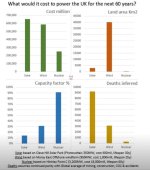I spoke to a lineman who cautioned me about the notion of people selling their excess home-generated electricity back to the electric company.
By design, grids are built to be 'fat' at the central plants, thin out as they spread across an area, and be the thinnest at the last few feet until entering a customer's home or business. The flow of electricity is one-way, from the plant to the customer, much like city-provided water supply.
When a homeowner establishes his own electricity supply and sells the surplus, now the flow of electricity must switch to the opposite direction, sometimes multiple times a day. We're pushing a "fluid" up a thin pipe toward the central plant, which is more difficult. It puts added stress on an already stressed system.
Except now those customers aren't paying for 24x7 service from the electric company. They're only paying for partial service because they're generating their own product. So the electric company, which has to be in business to cover the down periods, now has increased maintenance expenses paid for by decreased revenues. It might be a shock for those homeowners who can generate half-a-day's electricity to discover that their down period provided by the electric company costs more than when they were fully provided for.
Furthermore, since electric companies are so tightly-regulated, they can't easily pass cost increases to the customers, so logically they simply cut back on maintenance and manpower, jeopardizing the quality of the grid for everyone.
I know I'm not using the right terminology, so that was the concept he explained to me.

